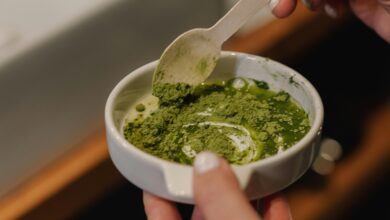The Role of Traditional Chinese Medicine in Holistic Health: A Comprehensive Guide

Traditional Chinese Medicine (TCM) is a centuries-old system of healthcare that emphasizes balance, harmony, and the interconnectedness of the body, mind, and environment. Rooted in ancient Chinese philosophy, TCM offers a holistic approach to health, focusing on prevention, natural healing, and treating the root cause of ailments rather than just symptoms. In recent years, TCM has gained global recognition as a complementary or alternative therapy for promoting overall well-being. This guide explores the principles, practices, and role of TCM in holistic health.
1. Core Principles of Traditional Chinese Medicine
At the heart of TCM are several foundational principles that guide its approach to health and wellness:
Qi (Energy Flow)
- Qi is the vital life force that flows through the body along pathways called meridians. When Qi is balanced and flowing freely, the body remains healthy. Blockages or imbalances in Qi can lead to illness.
Yin and Yang
- Yin and Yang represent opposing yet complementary forces in the universe. Health is achieved when these forces are in balance. For example, Yin represents coolness and calmness, while Yang symbolizes warmth and activity.
Five Elements (Wu Xing)
- The Five Elements—Wood, Fire, Earth, Metal, and Water—are used to describe the dynamic relationships between organs, emotions, and natural phenomena. Each element corresponds to specific organs and functions in the body.
Holistic Perspective
- TCM views the body as an integrated whole, where physical, emotional, and environmental factors influence health. It emphasizes treating the root cause of illness rather than merely alleviating symptoms.
2. Common Practices in Traditional Chinese Medicine
TCM encompasses a variety of practices designed to restore balance and promote healing. Below are some of the most widely used methods:
Acupuncture
- Acupuncture involves inserting thin needles into specific points on the body to stimulate energy flow and restore balance. It is commonly used to relieve pain, reduce stress, and treat conditions like migraines, insomnia, and digestive issues.
Herbal Medicine
- TCM uses natural herbs and plant-based remedies to address various health concerns. Herbal formulas are often tailored to the individual’s unique constitution and symptoms. Popular herbs include ginseng, astragalus, and goji berries.
Cupping Therapy
- Cupping involves placing heated glass cups on the skin to create suction. This practice is believed to improve circulation, release toxins, and alleviate muscle tension.
Tui Na Massage
- Tui Na is a form of therapeutic massage that combines acupressure and manipulation techniques to stimulate energy flow and relieve pain.
Tai Chi and Qigong
- These gentle movement practices combine breathing exercises, meditation, and slow, deliberate movements to cultivate Qi, improve flexibility, and reduce stress.
Dietary Therapy
- TCM places great emphasis on nutrition, recommending foods based on their energetic properties (e.g., warming or cooling) and how they affect the body’s balance.
3. The Role of TCM in Holistic Health
TCM plays a significant role in promoting holistic health by addressing the interconnectedness of physical, emotional, and spiritual well-being. Here’s how it contributes to overall wellness:
Preventive Care
- TCM focuses on maintaining balance and preventing illness before it occurs. Practices like acupuncture, herbal medicine, and dietary therapy help strengthen the immune system and enhance resilience.
Personalized Treatment
- Unlike Western medicine, which often follows a one-size-fits-all approach, TCM tailors treatments to the individual’s unique needs, lifestyle, and constitution. This personalized care ensures more effective and sustainable results.
Mind-Body Connection
- TCM recognizes the profound connection between mental and physical health. Practices like Tai Chi, Qigong, and meditation promote relaxation, reduce stress, and improve mental clarity.
Complementary Therapy
- TCM is increasingly used alongside conventional medical treatments to enhance recovery and manage chronic conditions such as arthritis, diabetes, and hypertension. For example, acupuncture is often recommended for cancer patients undergoing chemotherapy to alleviate nausea and fatigue.
Natural Healing
- By relying on natural remedies and non-invasive techniques, TCM minimizes the risk of side effects associated with pharmaceuticals and invasive procedures.
4. Benefits of Traditional Chinese Medicine
The holistic nature of TCM offers numerous benefits for individuals seeking a balanced and natural approach to health:
Improved Energy Levels
- TCM practices like acupuncture and herbal medicine help boost Qi, leading to increased vitality and stamina.
Stress Reduction
- Techniques such as Tai Chi, Qigong, and meditation promote relaxation and reduce cortisol levels, helping combat stress and anxiety.
Pain Management
- Acupuncture and cupping are highly effective for managing chronic pain conditions, including back pain, migraines, and fibromyalgia.
Digestive Health
- Herbal remedies and dietary therapy can address digestive issues like bloating, constipation, and irritable bowel syndrome (IBS).
Emotional Balance
- TCM addresses emotional imbalances by targeting the organs associated with specific feelings (e.g., the liver with anger, the heart with joy).
5. Challenges and Criticisms of TCM
While TCM has many benefits, it also faces challenges and criticisms, particularly in the context of modern medicine:
Lack of Scientific Evidence
- Some TCM practices, such as herbal medicine and acupuncture, have limited scientific validation, leading to skepticism among Western practitioners.
Regulation and Safety
- The quality and safety of herbal products can vary significantly, especially if sourced from unregulated suppliers. Contamination or incorrect dosages may pose risks.
Integration with Western Medicine
- Bridging the gap between TCM and Western medicine requires collaboration and open-mindedness from both sides. Miscommunication or resistance can hinder integration efforts.
Cultural Differences
- TCM concepts like Qi and Yin-Yang may be difficult for individuals unfamiliar with Chinese philosophy to grasp fully.
6. How to Incorporate TCM into Your Wellness Routine
If you’re interested in exploring TCM as part of your holistic health journey, here are some practical steps to get started:
Consult a Qualified Practitioner
- Seek out licensed TCM practitioners who can assess your condition and recommend personalized treatments.
Start Small
- Begin with simple practices like Tai Chi, meditation, or dietary adjustments before diving into more complex therapies.
Educate Yourself
- Learn about TCM principles and practices through books, workshops, or online resources to better understand how they align with your health goals.
Combine with Modern Medicine
- Use TCM as a complementary therapy rather than a replacement for conventional treatments, especially for serious medical conditions.
Listen to Your Body
- Pay attention to how your body responds to TCM practices and adjust accordingly. Everyone’s experience with TCM is unique.
7. The Future of TCM in Global Healthcare
As interest in holistic and integrative medicine grows, TCM is poised to play an even greater role in global healthcare. Research continues to explore its efficacy, and collaborations between Eastern and Western medical systems are becoming more common. With its focus on prevention, personalization, and natural healing, TCM offers valuable insights into achieving long-term wellness in an increasingly fast-paced world.




